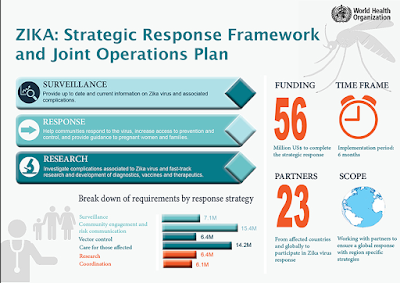 |
| Cameron County - Credit Wikipedia |
#11,414
While we wait to see when we get the first locally acquired vector transmitted Zika infection in the continental United States, two other mosquito borne viruses are also on our radar:
Dengue and Chikungunya.
Dengue Resurfaced In Key West in 2009 after a 70 year absence, and has periodically shown up in Texas since the early 2000's. The handful of outbreaks reported in Florida and Texas in recent years have been small, localized and short lived.
Chikungunya was introduced to the Caribbean by viremic travelers in 2013, who inadvertently `seeded’ the virus into the local mosquito population. Since then millions have been infected across the Americas, although Florida is the only state to have reported (a small number) of locally acquired cases.
That is, until today.
Although we are just learning about it this afternoon, it appears Texas had a locally acquired case of CHKV back in November of last year, which was contracted in the southernmost county in the state.
Brownsville is the largest city, and county seat of Cameron County, which lies on the border with Mexico, where last November the CDC issued Updated Travel Notices: Chikungunya In Mexico & Central America.
Exactly why this case wasn't reported to health authorities until very recently isn't clear, but the DSHS reminds labs and doctors of the need to report cases promptly in today's announcement.
DSHS Announces First Texas-Acquired Chikungunya Case
Recently reported case contracted in 2015
The Texas Department of State Health Services has confirmed the first locally acquired case of chikungunya, a mosquito borne illness. A Cameron County resident got sick with the illness in November 2015 and was diagnosed with a lab test in January 2016. The case, however, was not reported to the local health department until last month. The investigation performed by the Cameron County Department of Health and Human Services determined the patient had not traveled, and the case was confirmed last week by testing at the US Centers for Disease Control and Prevention.
Chikungunya disease is a viral illness spread by mosquitoes and was first detected in travelers returning to Texas from areas with local transmission in 2014. All previous Texas residents who contracted the illness were infected while traveling abroad. Because this case was contracted more than six months ago and mosquito surveillance has not found chikungunya in local mosquitoes, the primary risk of infection remains related to travel. DSHS encourages people to protect themselves from mosquito bites at home and while traveling to stop the spread of chikungunya, Zika and West Nile virus.
Chikungunya and most other viruses transmitted by mosquitoes are required to be reported to the local health department or DSHS regional office within one week. DSHS reminds laboratories and health care providers to report cases promptly so health officials will have the information they need to make decisions that will protect public health.
Chikungunya illness is rarely fatal but can cause severe joint pain, high fever, head and muscle aches, joint swelling and rash. Most people feel better within a week, though some may develop longer-term joint pain.
















